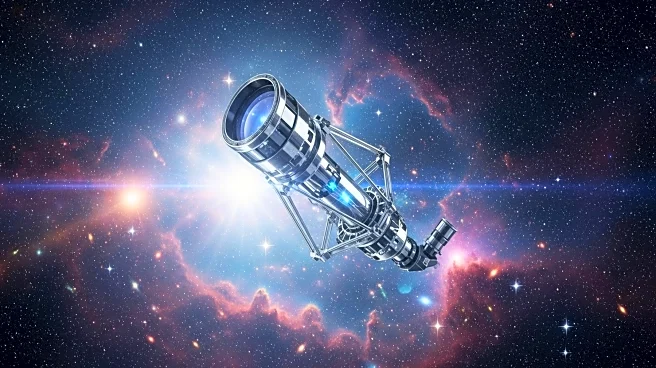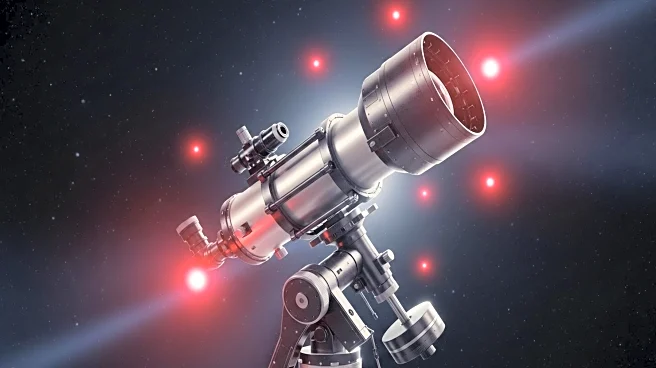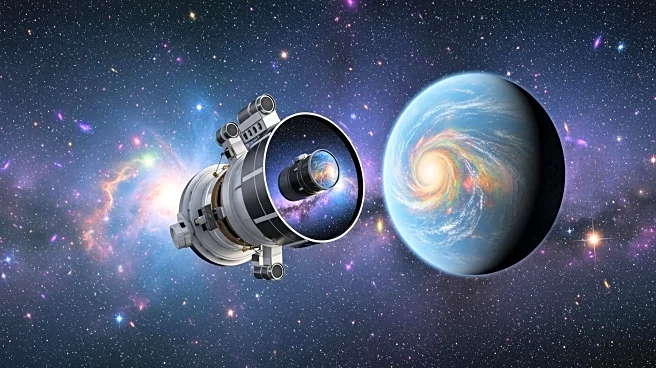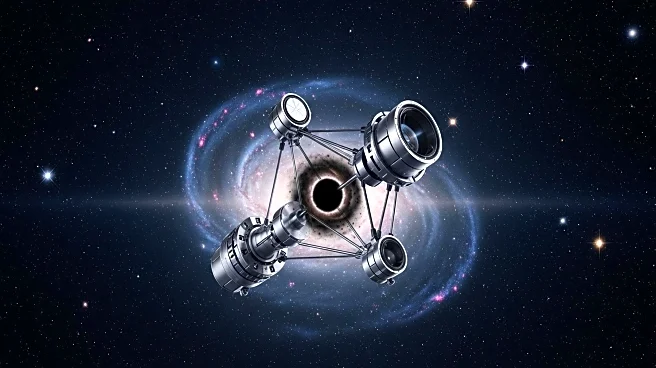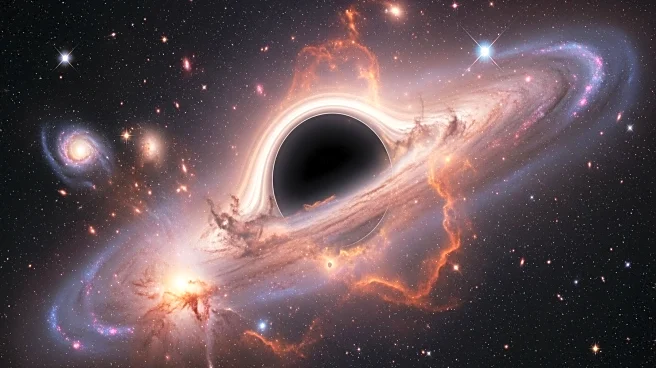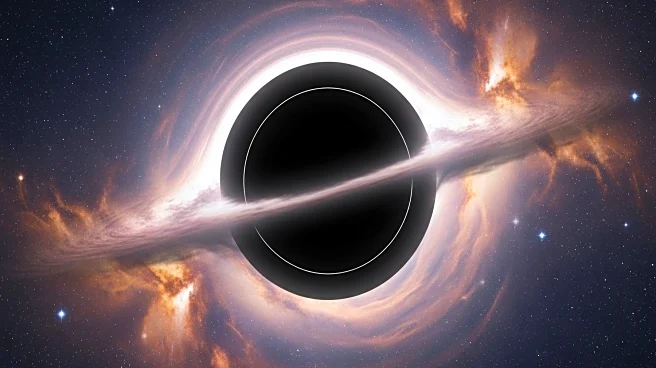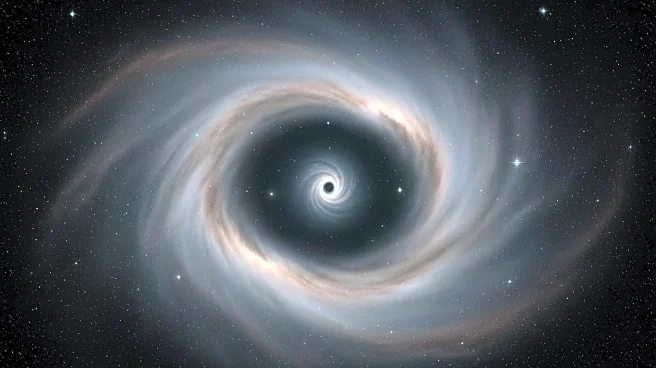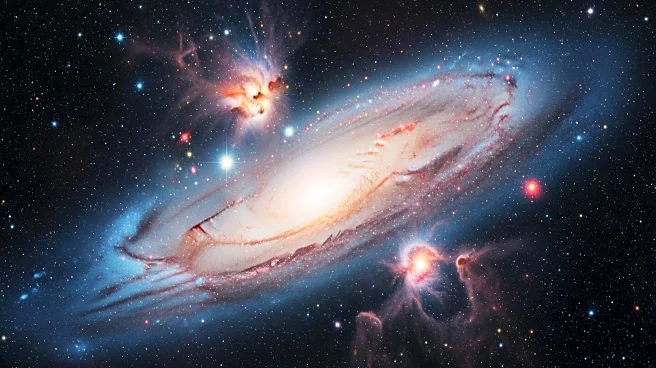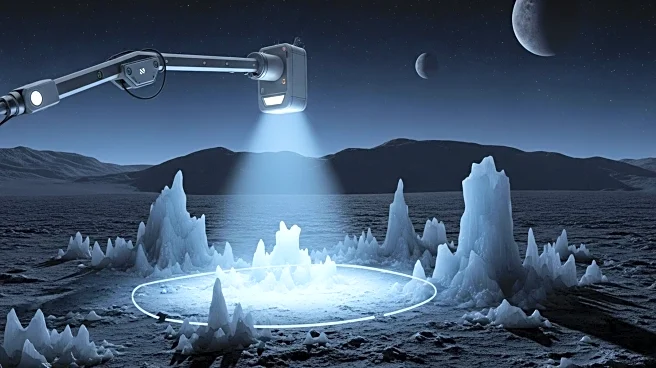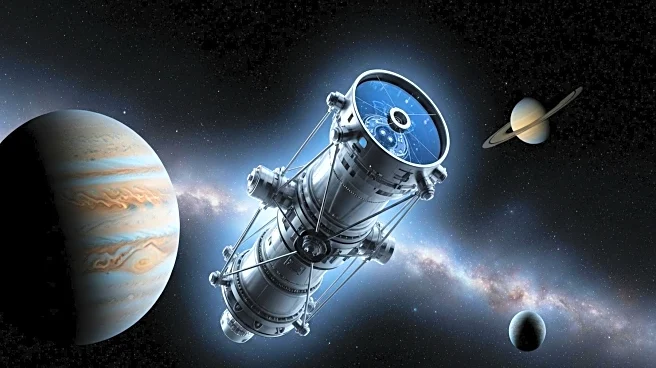What's Happening?
NASA's James Webb Space Telescope (JWST) has discovered mysterious 'little red dots' that may represent a new class of celestial objects. These objects, initially thought to be mature galaxies, are now suggested to be 'black hole stars.' This hypothesis emerged from a study by an international team of scientists, including researchers from Penn State. The 'red dots' are believed to be massive spheres of hot gas powered by supermassive black holes, rather than nuclear fusion. The JWST's infrared capabilities have allowed scientists to observe these objects, which appear far more massive than expected for their age, challenging existing models of galaxy formation.
Why It's Important?
The discovery of these 'black hole stars' could significantly alter our understanding of galaxy formation and the early universe. If confirmed, these objects might represent an early phase in the development of supermassive black holes, which are central to most galaxies. This finding could provide insights into the processes that led to the formation of the universe as we know it. The potential existence of such objects suggests that the universe's early conditions were more complex than previously thought, offering new avenues for research and exploration in astrophysics.
What's Next?
The research team plans to conduct further studies to test their hypothesis about these 'black hole stars.' This will involve examining the density of gas and the strength of these objects. The team aims to gather more data using the JWST to refine their models and better understand these phenomena. As the study progresses, it may lead to revisions in current astrophysical models and theories about the early universe.
Beyond the Headlines
The discovery of these objects highlights the potential for unexpected findings in space exploration. It underscores the importance of advanced telescopes like the JWST in expanding our knowledge of the cosmos. This research also raises questions about the nature of black holes and their role in the universe's evolution, potentially leading to new theoretical developments in astrophysics.
